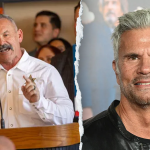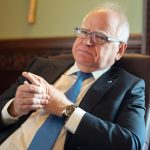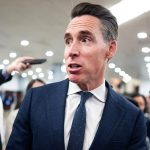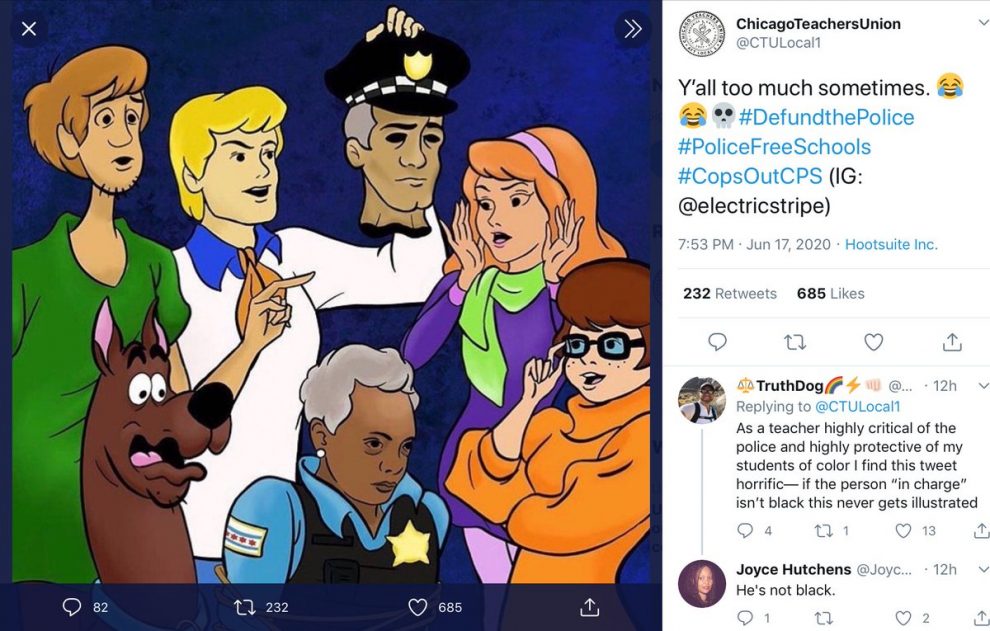Chicago Public Schools (CPS) will reopen in January, finally returning kids to their classrooms. But many teachers—between a quarter and half, the district suspects—plan to keep teaching from home, even if their students are back at their desks.
To cope with the potential staffing shortages, CPS plans to hire 2,000 new employees. About half of those will be part-time, non-unionized employees, and their job will be to supervise and assist students in the schools, according to The Chicago Sun-Times.
“One of the primary responsibilities for half of the new positions will be student supervision, according to a job posting,” noted the paper.
Keep in mind that the teachers opting to keep working from home will still be paid. Their continuation of virtual education is facilitated by a variety of special accommodations and medical leave. The new student supervisors, then, are an additional expense. Many classrooms will have desks filled with students—presumably still glued to their screens—a virtual teacher, and a classroom aide.
One wonders why the student supervisors can’t just teach the kids themselves and cut out the middle man, but of course, Chicago’s public school teachers are unionized, and thus have extreme job protections. In fact, the union is largely opposed to the new staffing plan:
Chicago Teachers Union Vice President Stacy Davis Gates said the part-time job posting was the first the union heard teachers might teach remotely to students in a classroom, a proposition she called “slightly less terrible than forcing teachers to engage in synchronous learning from unsafe buildings.” She said in a statement, however, that “hiring people into a position that barely pays minimum wage, with zero health care benefits in the middle of a pandemic, seems particularly cynical.”
“CPS can try to exploit low-wage temporary workers to fill in for staff who are not willing to sacrifice their lives for their livelihoods, when they must instead come to the table and bargain collaboratively to land what we need to return to our school buildings and our students safely—enforceable safety standards and real equity for Black and Brown school communities starved of equity for years before this pandemic,” Davis Gates said.
Follow the logic here: The district said schools will reopen in January and teachers should plan to go back to in-person instruction. The union, on behalf of many of its members, said no, it’s not safe, despite the emerging scientific consensus that schools have not been particularly risky environments for the spread of COVID-19. In response, the district said fine, teach from home if you must, and we will hire additional staff to help out in the classroom. Then the union accused the district of cynically exploiting these new staff members—the staff members who actually want to work—and essentially declared that schools will not be safe until there is “equity” for “Black and Brown school communities.”
Talk about shifting the goalposts.
Unfortunately, there is nothing unique about the behavior of the Chicago Teachers Union (CTU). All across the country, teachers unions are sounding a pessimistic note about the possibility of going back to work—despite the positive news that millions of people could be inoculated with a COVID-19 vaccine over the next few months, bringing the pandemic under much greater control. A headline in today’s New York Times asked, “If Teachers Get the Vaccine Quickly, Can Students Get Back to School?” The answer, at least according to the several different teachers union bosses interviewed for the story, was essentially no.
“I don’t think it’s around the corner,” Michael Mulgrew, head of the United Federation of Teachers, said about going back to school in the spring.
“Some of our members are being bullied into returning back to classrooms,” fretted Becky Pringle of the National Education Association. “That’s not safe, we don’t want to support that.”
The Times also quoted a different CTU official, President Jesse Sharkey, who said that he could imagine schools potentially opening in the fall—reminder: his own district is aiming for January—but if school “is continuing remote, there’s less urgency around the vaccination.”
Some union bosses said some of their members don’t want to return to their classrooms unless they have received the vaccine, but others have no plans to receive it. “My members are anxious to get back to the classroom, but they’re skeptical,” said E. Toby Boyd, president of the California Teachers Association, which represents 300,000 educaors. “We need to be sure it’s safe and there are no lasting side effects.” Another California teachers union leader told the Times that vaccination was just one component of reopening. Schools also need to undertake additional mitigation efforts such as testing and tracing.
Largely absent from these statements is any genuine sense of urgency. One cannot help but suspect that public schools will be among the very last institutions to return to normal, simply because the teachers unions have so much political power. Public schools are not subject to market forces. Yes, parents can un-enroll their kids, but they can’t reclaim their tax dollars that fund the public education system.
No matter what the state of the pandemic is months from now, providing students with the kind of educational experience that fits their needs is going to take flexibility and creative thinking on the part of policymakers. It’s a shame that many potential solution will invariably draw automatic opposition from the defenders of this wretched status quo.
Story cited here.
























